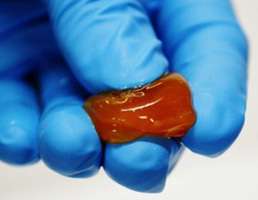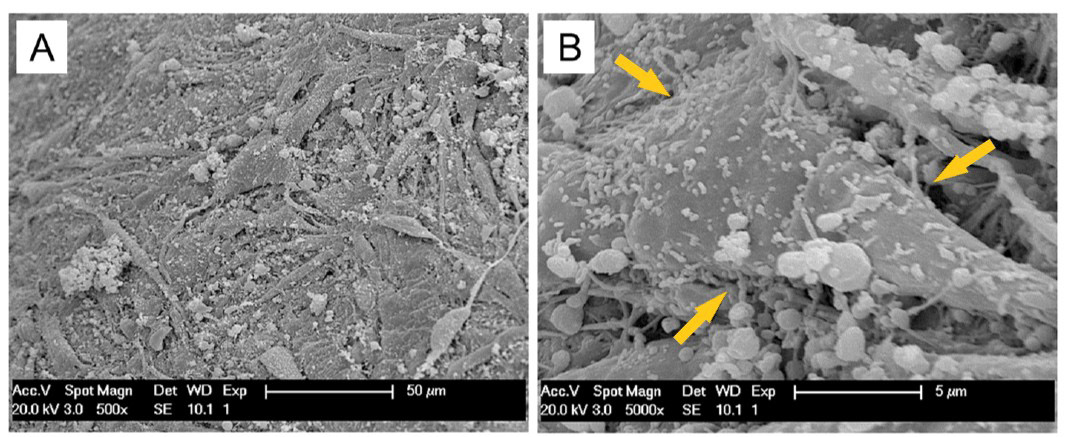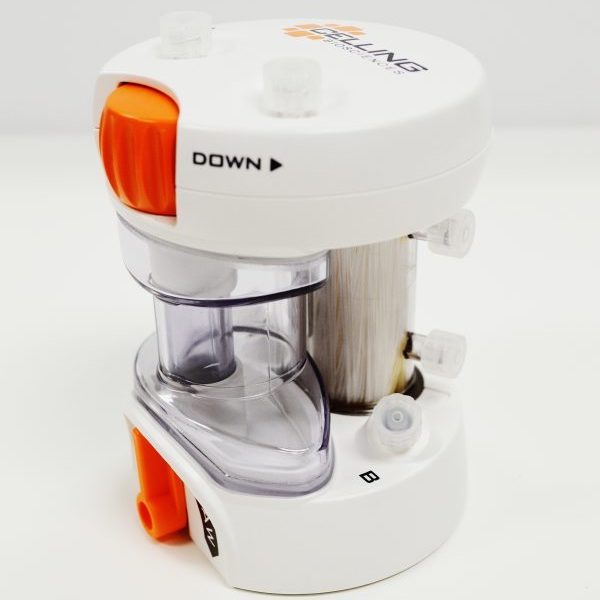Description
The ART PRP™ Plus has all of the features of the ART PRP™ but includes an integrated filter system for the ultrafiltration of proteins from platelet poor plasma (PPP). By injecting the plasma from one syringe on Port “B “to another syringe on Port “C” the cells and proteins are forced through the hundreds of hollow, nanoporous fibers, and water and salt ions are pushed out while proteins and cells are further concentrated. The fluid may be concentrated by passing through the filter multiple times until the desired volume is obtained. This ultrafiltration enriches the concentration of most proteins like Alpha-2 Macroglobulin (A2M), Interleukin-1 receptor antagonist protein (IRAP), Vascular endothelial growth factor (VEGF), Platelet-derived growth factor (PDGF), Transforming growth factor beta (TGF – beta), Fibroblast growth factors (FGF), Fibronectin and Fibrinogen7,8 , 9. A2M is a powerful natural plasma protease inhibitor, cytokine carrier, and ligand for cell-signaling receptors, and is synthesized primarily in the liver but dispersed through the blood plasma in whole blood and in bone marrow9,10. A2M stops the progression of Osteoarthritis (OA) by preventing degenerative cartilage breakdown and assisting with cartilage repair 4,7,8.
It can also inhibit inflammatory cytokines, and it thus disrupts inflammatory cascades. In its plasma-soluble tetramer form, it encapsulates matrix metallo-proteinases (MMP’s) and other destructive enzymes common to arthritic tissue and slows or halts the breakdown of articular cartilage surfaces and other forms of the Extracellular Matrix (ECM)11. A2M also binds up pro-inflammatory molecules; TNF-a, TGF-b, and IL-1b7. While IRAP is present at much higher levels in bone marrow aspirate, the amount available in whole blood is still concentrated with the ART PRP Plus system9.
Features
- Nearly closed system offers multiple connection ports
- Thumb-wheel allows precise recovery of the targeted cell layer
- Large aperture collection window
- Manual collection accommodates full spectrum of hematocrit
- Adjustable Flow Valve diverts fluid without additional sterile breaks
- Adjustable Flow Valve simplifies separation/combining of cells, growth factors and proteins
- Thumb-wheel recovers high yields of platelets and growth factors
- ART PRP™ Plus hyper-concentrates platelet poor plasma (PPP) using nanoporous fibers
- ART PRP™ Plus reduces 60 ml whole blood to 25-30 ml of PPP and nano-filtration further concentrates to 3-5 ml concentrated PPP
Benefits
- Minimizes sterile breaks where contamination occurs
- Easy separation of fluid fractions (e.g. PRP, PPP, fibrinogen, A2M, IRAP, etc.); Processes anywhere from 50 cc up to 60cc of whole blood
- Eliminates turbulence reducing cell velocity that can lyse cells
- Increases cell recovery rates; other fully automated designs compromise recovery rate (just like our previous ART 21 system)
- Keeps Buffy Coat in the collection zone, yielding 3cc to 5cc on average of PRP (Buffy Coat) from a typical 60cc volume of whole blood
- Manual manipulation is the critical feature that produces optimal recovery and a customized final product
- Provides for the highest concentration so that more cells can be delivered in the smallest volume
- Unmatched concentration of molecules (e.g. fibrinogen, alpha-2 macroglobulin, VEGF, IRAP & cytokines of similar molecular weights6)
- User has option to process separate layers of the centrifuged stack without exposure to additional contaminants and the ability to deliver two separate therapies from one device
Importance of Clot Formation
- Natural clot formation of cells, platelets, growth factors, and proteins has been shown to add considerably to long term cell viability in situ9,16,17. Additionally, clot formation prevents cell migration helping keep cells where the physician intends them to be.



Scanning electron microscopy of MSC laden PRP scaffolds. MSCs adhere to the PRP fibrin fibers (adhesion sites indicated by arrows in B). A) low magnification; B) high magnification. MSC mesenchymal stem cell; PRP platelet-rich plasma17
1 Floryan-Berghoff,et al. Intra-operative use of autologous PRP & platelet-poor plasma for orthopedic surgery patients.2004 Vol 80 No 4
2 Barrientos et al., Growth factors and cytokines in wound healing. Wound Repair Regen. 16, 585–601. 2008;
3 Grose and Werner et al., Regulation of Wound Healing by Growth Factors and Cytokines. Physiology. Rev. 83, 835+. 2003
4 Lopez-Vidriero et al., The use of autologous platelet-rich plasma (platelet gel) and autologous platelet-poor plasma (fibrin glue) in cosmetic surgery. Plast. Reconstr. Surg. 107, 229–237; discussion 238–239. 2010;
5 Marx, Platelet-rich plasma: evidence to support its use. J. Oral Maxillofac. Surg. 62, 489–496. 2004;
6 Sánchez et al., Platelet-Rich Therapies in the Treatment of Orthopaedic Sport Injuries. Sports Med. 39, 345–354. 2009.
7 Murphy et al. Adult and umbilical cord blood-derived platelet-rich plasma for mesenchymal stem cell proliferation, chemotaxis, and cryo-preservation, Biomaterials 2012; 33(21):5308-5316.
8 Wang et al. Identification of alpha-2-macroblobulin as a master inhibitor of cartilage-degrading factors that attenuates the progression of post traumatic osteoarthritis. Arthritis & Rheumatology 2014;66(7):1843-1853
9 Cassano et al. Bone marrow concentrate and platelet-rich plasma differ in cell distribution and interleukin1receptor antagonist protein concentration. Knee Surg Sports Tramotol Arthrosc, 1 Feb 2016.
10 AhmedA, et al. Alpha-2-Macroglobulin: A Physiological Guardian, Journal of cellular physiology, 2013 -Wiley
11 Sanja Arandjelovic, et al. A derivative of the plasma protease inhibitor α2-macroglobulin regulates the response to peripheral nerve injury, Journal of Neurochemistry, 11 July 2007
12 Data on File. Celling Biosciences, 2016.
13 Karli et al. “Autologous Regenerative Therapies: Rapid Concentration of Progenitor Cells, Platelets, and Proteins at the Point-of-Care,” TERMIS annual meeting, September 2015, Boston, MA.
14 Hegde et al. “A Prospective Comparison of 3 Approved Systems for Autologous Bone Marrow Concentration Demonstrated Nonequivalence in Progenitor Cell Number and Concentration,” J Ortho Trauma, Vol. 28, October 2014
15 Gassling V. et al. Comparison of platelet rich fibrin and collagen as osteoblast-seeded scaffolds for bone tissue engineering applications. Clin Oral Implant Res 2013 Mar;24(3):320-8
16 Julia Etalain et al. An Optimized Protocol for Platelet Rich Plasma Preparation to Improve its Androgenic and Regenerative Properties. Nature: Scientific Reports (2018) 8:1513
17 Xie et al. Biology of platelet-rich plasma and its clinical application in cartilage repair, Arthritis Research and Therapy 2014, 16:204
